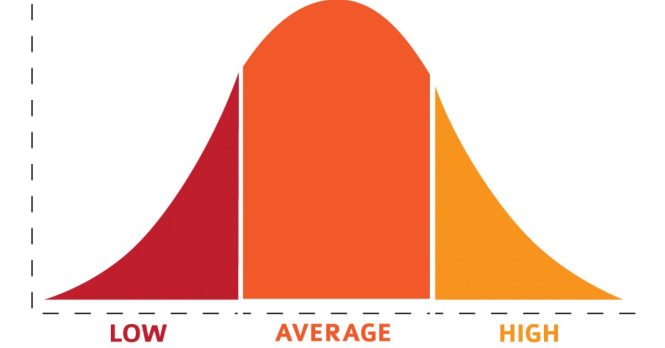
Healthcare is brimming with competitive clinicians and administrators. CMS and other “grading” agencies pit us against each other concerning benchmarking, penalties, and value-based payments. But does this methodology promote better patient care?
Most of our quality and experience metrics are “graded” on a bell-shaped curve; in other words, how we do, compared to others? This constant analysis leads to winners and losers regardless of the outcome for the patient. So, I can have abysmal numbers, but still be in first place if I am better, comparatively, to everyone else. Inversely, I can do incredibly well and end up last because others are doing marginally better.
From a statistical perspective, there is no difference between most delivery systems; however, when measured by percentiles and a forced ranking, it creates a distinction that is not mathematically accurate. Moreover, since few cases comprise many of the numbers, the “noise” within the data is considerable and thus exacerbates the situation.
Why is the present methodology such a problem? First and foremost, it does not translate true quality or patient experience to the consumer, and thus one may consider the model a comment on our moral ethos. Are we more worried about delivering high quality and service, or are we merely interested in creating a situation where there are winners and losers?
Additionally, this methodology creates an internal dynamic with highly motivated clinicians and staff doing their best and delivering results, yet the administration informs them that they are poor performers based on the results. Unequivocally, we must continuously strive for improvement, but should we be doing this at the expense of our colleagues? Moreover, when competition is created in this manner, gaming occurs since one is merely striving to do better than the other versus attempting to reach a specific bar.
From a consumer perspective, obtaining an “A” for all care deliverers should be achievable since one desires top-notch clinicians and facilities. Therefore, it’s essential to adjust our thinking to allow for such an event. Hence, the goal is “absolute” truths rather than “relative” truths. One can set goals and improvement levels based on the distribution. Additionally, we must continue to analyze care delivery categories since the patient populations we manage are different.
Thus, it’s crucial to pivot to threshold scoring rather than our present ranking model. Unquestionably, raw scores are better than percentiles, especially when there are confidence intervals in the scoring. As we continue our improvement journey, it’s essential to address what metrics genuinely differentiate between engagement and service. The same is valid for quality and health equity. Should we measure more encompassing metrics such as Healthy Days, Net Promotor Score, Activation Level, improvement in health equity, and a measure of affordability instead of more granular metrics unconnected to outcomes, equity, and consumerism?
No doubt that we will act and react to whatever “game” is placed before us. So, let’s design a model where everyone has the chance to win.
